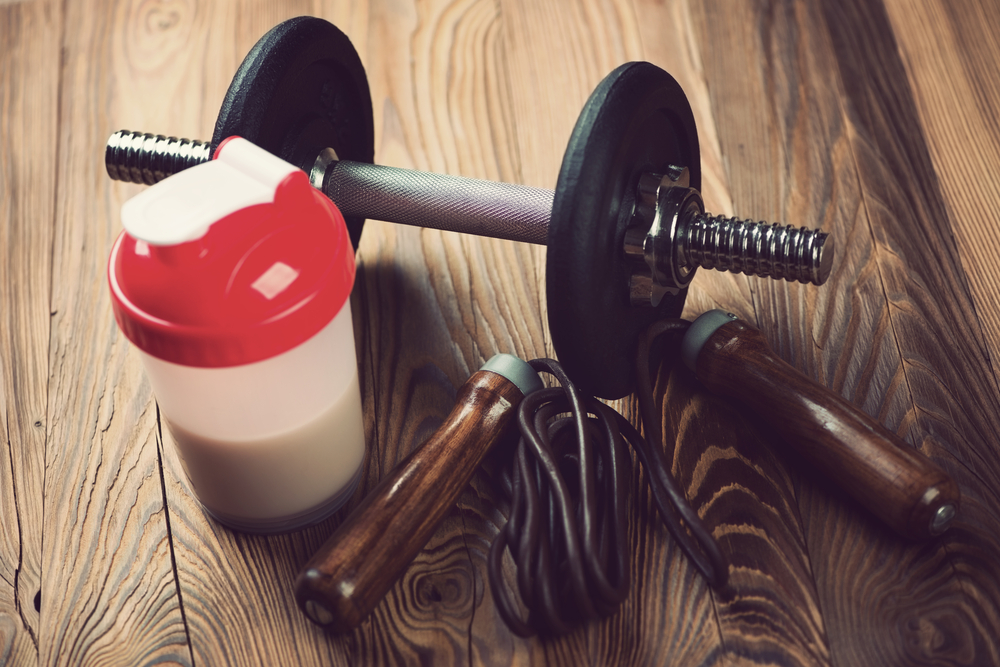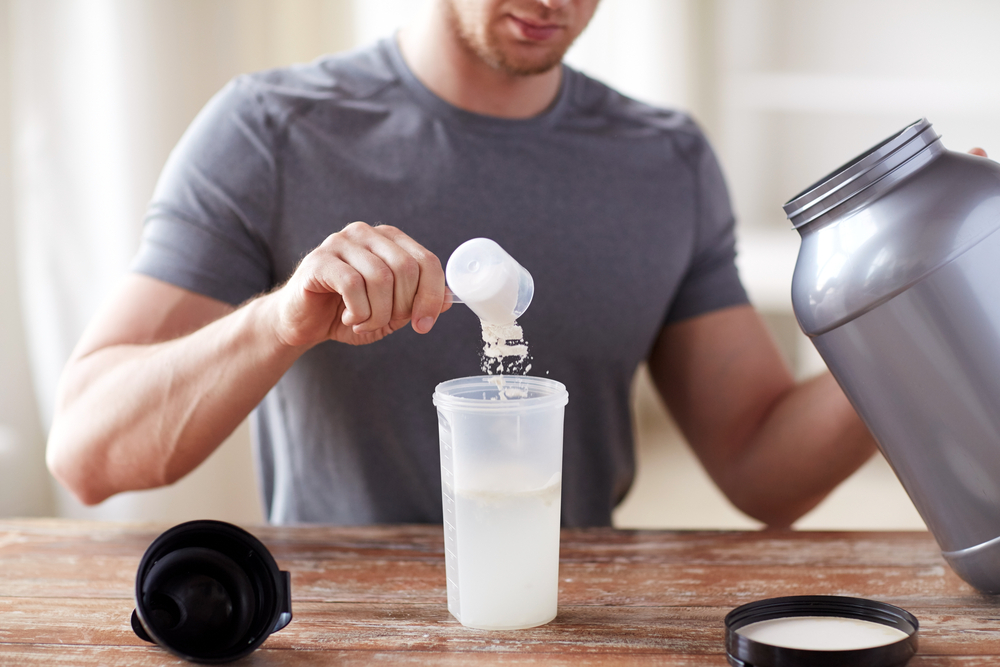Creatine is today part of the most used food supplements to improve sports performance. But it is not always easy to know what form of creatine to use? If it has beneficial effects or undesirable effects? Here is an overview of this molecule studied for many years.
History of creatine
Creatine is a non-essential amino acid derivative naturally present in the body and particularly in muscle fibers. Manufactured in cells from arginine, glycine and methionine, it can also be provided by food (red meat for example) or supplementation. Discovered in 1832 by the French chemist Michel Chervreuil, its actions were however completely unknown at that time.
It was only 15 years later that researchers realized that it was 10 times more present in the muscles of wild foxes than in those held in captivity. They concluded that this molecule is involved in the functioning of the muscle. This substance was then forgotten and only resurfaced in the 1970's when it was studied again and used in sports nutrition. Indeed, the exceptional performances of rugby players from the southern hemisphere, cyclists and some footballers were attributed to the intake of creatine in large doses.
But this was of course false, and wrongly gave this molecule a doping product image in the early 2000s. It is now very present in gyms and recognized to increase physical performance. But what is it really? What are its effects on sports performance and particularly in bodybuilding?
1. Increase in strength
To gain strength in bodybuilding exercises such as the bench press, squat or deadlift, you need to gain explosiveness. This involves an energy production pathway called anaerobic alactic which uses the adenosine triphosphate ATP available in the cell. ATP is the form of energy that can be used by the cells, this molecule is essential for muscle contraction. But the ATP reserves available in the cell are very limited, which is why the effort cannot last more than 10 seconds at very high intensity. For example, this is the energy production pathway used by sprinters or powerlifters. Wanting to perform on an explosive exercise therefore requires larger stocks of ATP 1.
The molecule that allows the rapid reformation of ATP to fuel the muscle fiber is called phosphocreatine (creatine phosphate). Numerous scientific studies have shown that creatine monohydrate supplementation increases creatine and creatine phosphate stocks in the cells and therefore improves sports performance 1.
2. Increase in muscle mass
The increase in strength, allows more mobilization of the muscle during bodybuilding exercises and therefore gain in muscle growth. But not only! By modulating certain hormonal responses following an exercise, creatine can increase muscle protein synthesis, in other words anabolism. Scientific studies have indeed shown an ability of creatine to increase the levels of IGF-1 and MGF (growth factor) 2.
Creatine also increases the water content inside the muscle cells, which increases their size, which could also play a role in the muscle development process.
All of these factors help to stimulate anabolism. But muscle development occurs if the balance between anabolism and catabolism is in favor of anabolism. And creatine is also involved because it has the ability to limit the process of catabolism. Indeed, studies have shown that creatine supplementation can reduce muscle breakdown by reducing the oxidation of leucine (essential amino acid to activate protein synthesis). Finally, it reduces the secretion of myostatin, a hormone whose role is to block the development of new muscle cells.
3. Increases concentration
In people with creatine deficiencies (often vegetarians), creatine intake has shown beneficial effects on concentration tests. This would improve cognitive capacity and therefore potentially have an effect on sports performance.
4. How much creatine to take?
Before addressing the question of dosage, we can look at the most assimilable and effective form of creatine. The answer is not necessarily obvious. However, the best known and most studied form is creatine monohydrate. There are other forms (creatine HCL, creatine nitrate ...) sold as being superior in quality, but without sufficient scientific support. The monohydrate form is a relatively low cost form with hundreds of scientific proofs of its effectiveness. It therefore seems to be the best option.
In order to achieve the desired effects, many studies have shown that different protocols can be effective. You can do a loading phase for 5 days at 20 grams of creatine per day in 5g portions, followed by a maintenance phase at 3g creatine per day 2.
If you do not wish to do a loading phase, a daily supplementation of 3 to 5 grams of creatine per day for a minimum of 3 to 4 weeks can provide equivalent results 3.
Regarding the best time to consume it, it should not be before training, contrary to what you might think. Indeed, a 5g dose of creatine leads to a decrease in blood sugar levels (blood sugar).
So by taking a dose before training, there is a risk of lowering blood sugar levels, which will be counterproductive because it may result in a decrease in energy at the time of effort and therefore a decrease in the quality of muscle contraction 4.
It is therefore preferable to place your creatine consumption after training, or at the time of a meal because the assimilation is better when it is coupled with carbohydrates 5.
5. Side effects ?
Creatine is therefore one of the most studied dietary supplements, whether for its action on strength, production of adenosine triphosphate atp, muscle growth but also on its potential side effects.
To date, studies have not shown any side effects. In fact, one study showed that creatine consumption for 21 months had no negative effect on 52 control points 6. On the other hand, it is preferable that people with a history of kidney or liver function problems consult a physician beforehand.
Finally, although many associate creatine with dehydration and cramping, note that research to date shows no link 6.
Sources:
1 Cooper R, Naclerio F, Allgrove J, Jimenez A. Creatine supplementation with specific view to exercise/sports performance: an update. J Int Soc Sports Nutr. 2012;9(1):33. Published 2012 Jul 20.
2. Buford TW, Kreider RB, Stout JR, et al. International Society of Sports Nutrition position stand: creatine supplementation and exercise. J Int Soc Sports Nutr. 2007;4:6. Published 2007 Aug 30. doi:10.1186/1550-2783-4-6
3. Rae C, Digney AL, McEwan SR, Bates TC. Oral creatine monohydrate supplementation improves brain performance: a double-blind, placebo-controlled, cross-over trial. Proc Biol Sci. 2003;270(1529):2147-2150. doi:10.1098/rspb.2003.2492
4. Gualano B, de Salles Painelli V, Roschel H, Artioli GG, Neves M Jr, de Sa Pinto AL, et al.. 2011. Creatine in type 2 diabetes: a randomized, double-blind, placebo-controlled trial. Med. Sci Sports Exerc. 43(5): 770-778
5. Green, A. L., Simpson,(1996), Carbohydrate ingestion increases creatine retention during creatine feeding in humans. Acta Physiologica Scandinavica, 158: 195-202.
6. Kreider RB, Melton C, Rasmussen CJ, Greenwood M, Lancaster S, Cantler EC, Milnor P, Almada AL. Long-term creatine supplementation does not significantly affect clinical markers of health in athletes. Mol Cell Biochem. 2003;244(1-2)



